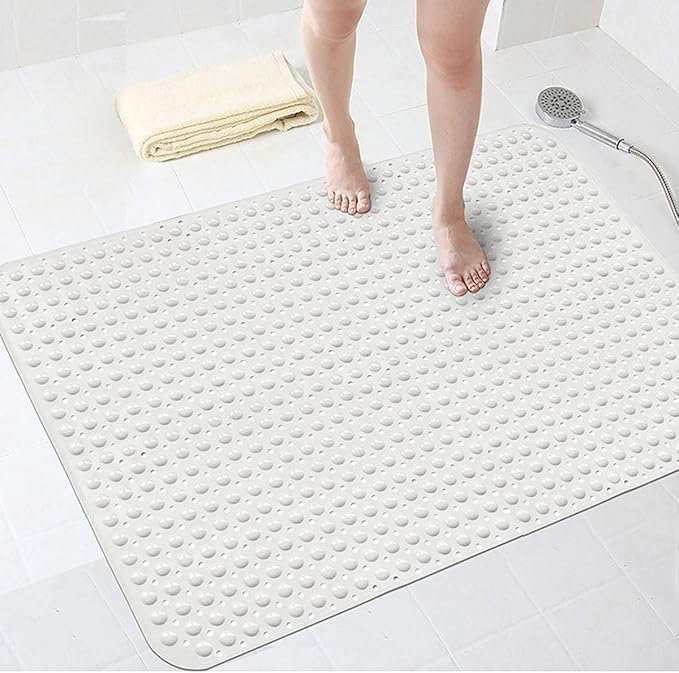Caring for a patient at home requires more than compassion — it requires thoughtful preparation. Whether your loved one is recovering from surgery, managing a chronic illness, or receiving post-hospital care, a well-prepared home plays a vital role in comfort and recovery. In this guide, we’ll explain how to prepare your home for patient care, step by step, to ensure safety, cleanliness, and peace of mind for both the patient and the caregiver.
Assess the Patient’s Needs
Before making changes, it is crucial to understand the patient’s specific needs and requirements. This helps you plan modifications that match their physical and emotional well-being. Talk to the patient’s healthcare team and note:
- Mobility challenges (stairs, transfers, walking)
- Equipment needs (wheelchair, oxygen, hospital bed)
- Dietary limitations and hygiene needs
This assessment will guide the room choice, equipment selection, and daily routines.
Choose Recovery Space
To prepare the home for patient care, start by selecting a quiet, safe, and easily accessible space for the patient. A well-prepared recovery area not only provides comfort but also reduces stress, promoting faster healing. Before setting up the space, make sure it’s comfortable, safe, and easily accessible for both the patient and the caregiver.
Location:
In general, it is recommended that you select a room on the ground floor to avoid stairs. Ensure the room is conveniently located near a bathroom. If the patient is not permitted to move, a portable commode is the most appropriate option.
Comfort:
Proper ventilation is essential to a patient’s comfort, as it keeps the room fresh and prevents the formation of odors. A patient’s mood can be improved by ensuring that the room receives enough natural sunlight. Installing blackout curtains will ensure a restful night’s sleep. It is essential to maintain the room temperature based on the patient’s needs or as prescribed by the physician.
Privacy:
Choose a room that is away from heavy household traffic. This prevents disturbances caused by visitors opening doors, children making noise, and pets acting up.
Emergency Readiness:
The door to the room must be wide enough for a wheelchair to pass through without difficulty. A caregiver should always be able to access the room in case of an emergency.
Ensure Safety and Accessibility
Safety is the foundation when you prepare a home for patient care. Falls are one of the biggest risks for elderly patients and those with mobility issues, especially in a home setting. A safe, well-lit, and accessible environment not only reduces complications but also helps patients move confidently during recovery. Improving accessibility also eases strain for caregivers. Even small changes in the surroundings can prevent serious accidents and promote safer healing at home.
Clear Walkways:
Ensure that hallways and doorways are always clear of loose rugs, electrical cords, and clutter, especially when patients use wheelchairs or walkers.
Proper Lighting:
Proper lighting can be a lifesaver. The patient’s room, hallways, and bathrooms, for example, must have good lighting at all times. For patient comfort, use glare-free bulbs. Switches and lamps should be located within easy reach of the patient’s bed.
Flooring Considerations:
Double-check the flooring and use non-slip mats in wet areas, preferably in the shower. Place non-skidding rubber-backed rugs on slippery floors to ensure comfort and stability.
Emergency Preparedness:
In the case of a power outage, keep a flashlight nearby to ensure better visibility in case of an emergency. Place a call button or bell near the bed so that caregivers can be alerted and respond immediately.
Arrange Furniture and Equipment
When you prepare a home for patient care, proper furniture arrangement plays a vital role in ensuring comfort and safety. Thoughtful placement of furniture makes caregiving easier and prevents unnecessary strain for both the patient and the caregiver. It also reduces the risk of falls, supports daily activities, and encourages independence during recovery. The patient’s bed, chair, and mobility aids should be positioned for maximum comfort, safety, and easy access to essentials like water, medications, or a call bell.
Bed Setup:
Ideally, the bed setup should be based on the patient’s level of comfort. Adjusting the bed height is necessary to make getting in and out of bed easier. To maintain good posture and support, consider using extra pillows or wedge cushions. Additionally, medical devices, lamps, and phone chargers should be within easy reach of wall outlets.
Chair Arrangement:
A sturdy armchair should be provided for the patient to ensure they can relax and feel secure while sitting up or standing. Patients with limited mobility often struggle with using chairs with soft padding because these chairs do not offer sufficient support. For patients who need to rest in a semi-upright position, a recliner would be a wise choice.
Mobility Aids:
Place the wheelchair, cane, or walker within arm’s reach of the bed. For proper use, make sure the aids are adjusted to the patient’s height. Ensure doorways are clear and large enough for safe passage, and use mobility equipment as needed.
Support Surfaces:
Always keep the nearby surfaces clean and clear. Avoid furniture that is wobbly to avoid any injuries. For meals, books, and personal items, such as medicines, place a side table or tray nearby.
Emergency Access:
Always keep the patient’s room clutter-free. Ensure the furniture is arranged to allow for quick patient access in case of an emergency.
Organize Essentials Within Reach
As you prepare your home for patient care, organizing essentials within easy reach is one of the simplest yet most effective steps you can take. It prevents falls, reduces stress, and helps the patient feel more independent during recovery. Elderly and post-surgical patients should never have to stretch, bend, or walk far for their daily needs. Keeping essential items close by saves energy and minimizes the risk of accidental movement or injury.
Medication Station:
Organize the medication station using a notepad for accurate dosage tracking. This will ensure that the patient does not miss any doses. For ease of access, medications and essentials should be placed on a nearby bedside table. Make sure medications are organized in pill organizers and placed on a bedside table with a glass of water to facilitate easy access to them.
👉 Learn more in our guide on Medication Management
Hydration and Snacks:
Keep a water bottle close to the bed for easy access. Keep healthy snacks on hand, such as yogurt, fruit, and crackers. Perishable food should not be kept near the bed.
Communication Tools:
Keep communication tools, such as phones and call bells, ready and accessible for the patient. Plug in the chargers so the patient does not have to move. For larger spaces, a walkie-talkie can be used by the caregivers for quick contact.
Personal Care Items:
To maintain basic hygiene, personal care items such as tissues, wet wipes, and hand sanitizers should be readily available. Keep the toiletries nearby for easy access if bathroom visits are limited. Ensure the glasses, dentures, or hearing aids are placed within easy reach of the patient, without requiring excessive strain.
Comfort Items:
Comfort items such as blankets, socks, shawls, or TV remotes should be placed on the side table or in a dedicated place for the patient to access them easily. Books and Magazines should be provided for the entertainment of the patient. Night lamps should be close enough for easy control.
Organization Tips:
- Use baskets, bins, or bedside caddies to avoid clutter.
- Rotate items daily so everything remains clean and accessible.
- Avoid overloading the bedside with unnecessary objects.
Prepare the Bathroom
When you prepare a home for patient care, special attention should be given to the bathroom, especially for patients with limited mobility or balance issues. Wet and slippery floors are common causes of falls and injuries. Preparing the bathroom in advance with safety measures, such as non-slip mats, grab bars, and proper lighting, can greatly reduce these risks. A safe and accessible bathroom also supports good personal hygiene and helps prevent infections during recovery.
Non-Slip Surfaces:
Place non-slip mats inside and outside the shower. Use rubber-backed rugs to prevent sliding.
Grab Bars and Railings:
Install sturdy grab bars near the toilet and shower for added support. Make sure they are firmly fastened to the wall and can support the full weight of the patient’s body. Suction-based handles should be avoided since they may become detached.
Shower Safety:
To facilitate seated bathing, consider using a shower chair or bench. Use a handheld shower for an easier grip. Keep soap and shampoo in a shower caddy within easy reach.
Toilet Assistance:
For patients who find bending uncomfortable, a raised toilet seat can help by lessening the strain on the knees and hips. Consider adding a safety frame or grab bar to provide support while sitting or standing.


Accessibility Tips:
To make the bathroom more comfortable and safer, try keeping it well-lit, especially at night. For the towels and other items, arrange them on a shelf or rack at a comfortable height; this way, you won’t have to bend over to reach them.
Hygiene Supplies:
Remember to use antibacterial soap and clean towels to stay fresh. Wet wipes are also great for quick clean-ups. Keep the laundry basket in a convenient spot so that dirty clothes can be conveniently placed in it. Caregivers may use disposable gloves to maintain hygiene.
Organize Medical Supplies and Equipment
Keep all medical supplies well-organized and labelled. Use storage bins or shelves for items like gloves, wound dressings, and medications. This ensures quick access during emergencies.
Essential Medical Supplies:
- Sterile gauze, bandages, adhesive tape, disinfectant.
- Disposable gloves and hand sanitizer.
- Thermometer, BP monitor, glucose monitor as required.
- Pill organizers and dosing tools.
Comfort and Support Supplies:
- Extra pillows for positioning and pressure relief.
- Blankets that are light and breathable are perfect for keeping the patient comfortable.
- Consider an anti-bedsores mattress or cushions if the patient will spend long hours in bed.
Mobility Supplies (if needed):
Patients who are unable to move might need crutches, walkers, or a wheelchair. Make sure these items are well adjusted to their height to avoid any uncomfortable situation. For extra support, non-slip socks and comfortable footwear should be provided.
Organization Tips:
Organizing medical and care supplies is an art. To be proficient in this art, the caregivers are advised to keep all supplies in one clean and dry spot. In case of emergencies, a first-aid kit should always be ready and accessible. Labelling the items is a good way to avoid mistakes in patient care. A well-organized medical supply can ensure faster recovery.
Maintain Hygiene and Infection Control
To prepare the home for patient care, maintaining a clean environment supports faster recovery. Disinfect high-touch surfaces regularly, such as doorknobs, bed rails, and light switches. Wash bedding and towels frequently, and keep hand sanitizers available. Follow medical advice for cleaning wounds or handling used medical items safely.
You can follow our complete infection control guide – Basic Care Skills: Hygiene and Infection Control.
Focus on Comfort and Emotional Well-Being
Physical comfort isn’t enough; emotional comfort matters too. Encourage natural light, play soothing music, and decorate with comforting colours. Family photos or small plants can make the space more welcoming. Spend quality time with the patient to reduce feelings of isolation or anxiety.
Plan for Emergency Situations
Keep emergency numbers visible — doctor, ambulance, and nearby hospitals. Have a first-aid kit, extra medications, and copies of medical records ready. Ensure that all caregivers know how to use medical devices and what to do in the event of an emergency.
Create a Care Schedule
A structured routine builds consistency. Use a whiteboard or a caregiving app to plan:
- Medication times
- Meals
- Exercise or therapy sessions
- Doctor appointments
👉 See also: Caregiver Stress Management Tips — staying organized helps reduce burnout.
Don’t Forget the Caregiver’s Well-Being
Caring for someone can be physically and emotionally draining. Make sure you get rest, eat well, and ask for help when needed. A healthy caregiver ensures consistent, compassionate patient care.
Conclusion
It may seem overwhelming to prepare a home for patient care, but thoughtful planning makes the process smooth and manageable. A safe, clean, and organized space not only promotes faster healing but also brings emotional comfort to both the patient and the caregiver. Begin with small, meaningful adjustments and gradually develop a nurturing environment that supports recovery and promotes peace of mind.
FAQs
Choose a quiet, bright room with easy access to the bathroom. Include a comfortable bed, mobility space, and essential supplies nearby.
Grab bars, non-slip mats, a first-aid kit, adequate lighting, and organized medical supplies are essential for home patient care.
Maintain hand hygiene, disinfect surfaces as needed, use gloves when necessary, and wash bedding regularly to minimise infection risks.
Yes, with the right setup — use a hospital bed, change positions regularly, keep skin dry, and maintain good nutrition and hygiene.
Use a daily care chart or app to track medicines, meals, and doctor visits. Set reminders to manage your tasks efficiently.





